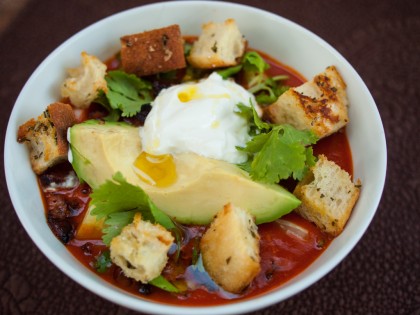Basil comes in many varieties, including sweet basil, purple basil, Thai basil, and Lemon basil. Sweet basil is the most common varietal and the one most frequently used in Western cooking. Sweet basil has large, green, tender leaves; it sprouts tiny white blossoms in late summer; and it tastes of anise and cloves.
Basil is an extremely popular herb that plays a role in cuisines from all around the globe. In the Mediterranean, fresh basil leaves are blended with olive oil, garlic, pine nuts or walnuts, and parmesan cheese to make pesto, a vibrant, slightly spicy topping for pasta, bruschetta, and pizza. In France, fresh basil is combined with olive oil, and garlic to create pistou, a rich sauce that is drizzled over vegetable and seafood soups. Used as a garnish, freshly chopped basil leaves are an easy way to spruce up salads and pastas, soups and even casseroles.
Basil has long been believed to heal all kinds of ailments, including kidney and liver problems, headaches, colds, even infertility. These days, basil is valued because it is high in Vitamin K, an important nutrient for a healthy vascular system. Basil is also a good source of antioxidants.
Because a cold snap can easily kill off young plants, basil seeds do best when sown at the end of spring or the beginning of summer. Basil needs light soil that is basic, as opposed to acidic, and well draining. Once basil seedlings reach 3 inches in height, they should be replanted 12 inches apart. Basil should be watered frequently so that the soil remains moist. Central tufts of leaves should be plucked in order to encourage new leaf growth.
New Mexican folklore has many tales about basil. One folktale suggests that carrying basil in your pockets attracts money into them. Another states that a wife wishing to cure her husband's wandering eye should sprinkle dried basil powder over her heart.


